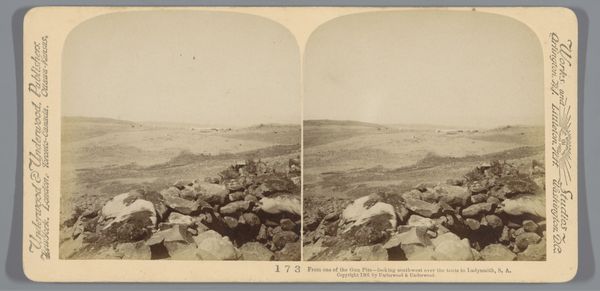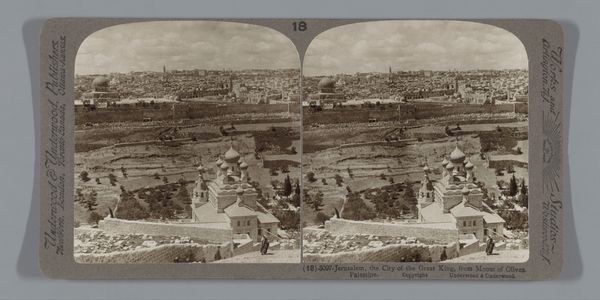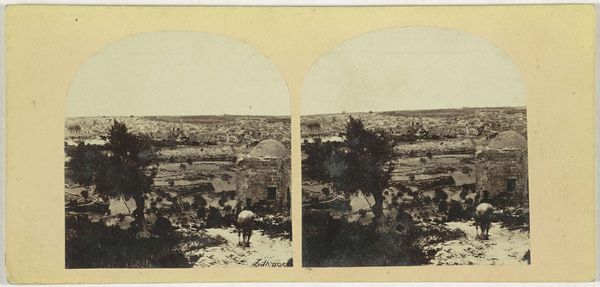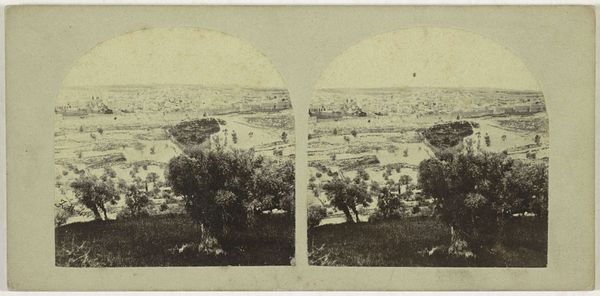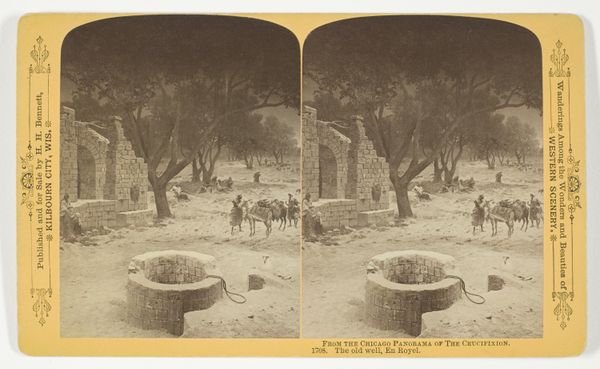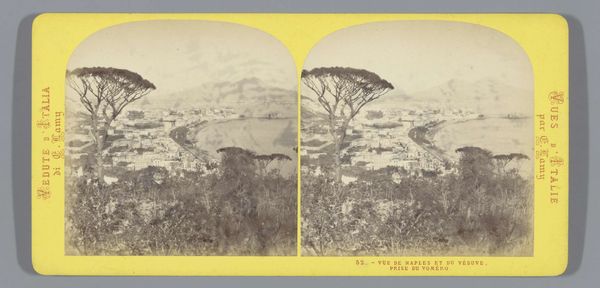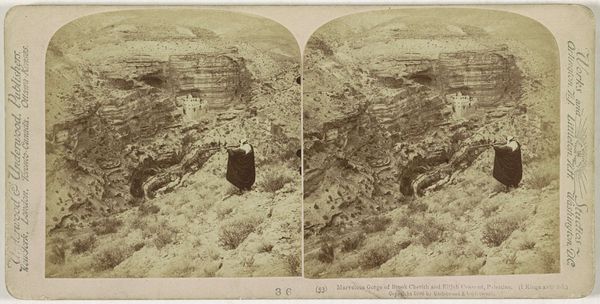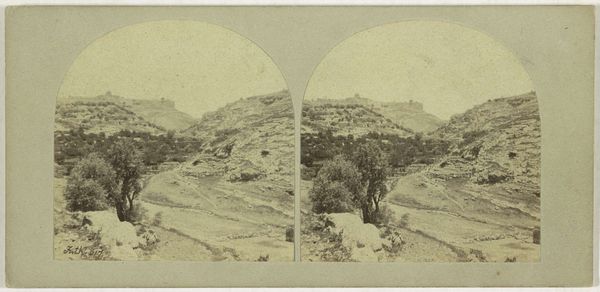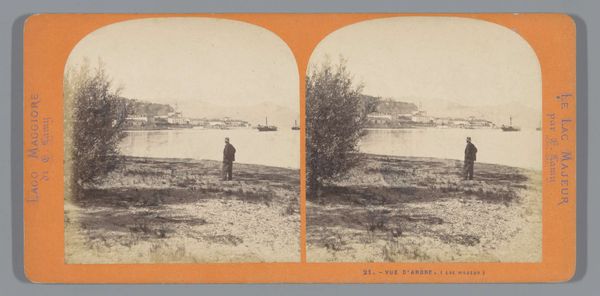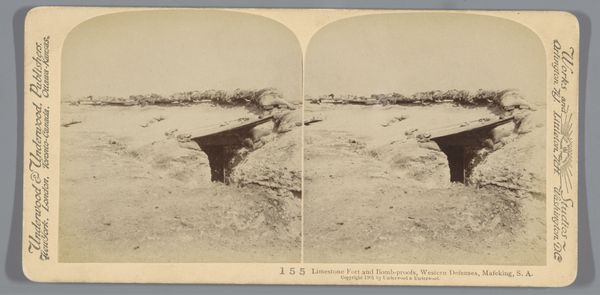
print, photography
#
16_19th-century
# print
#
landscape
#
photography
#
men
#
cityscape
Dimensions: 10 × 7.4 cm (each image); 10.7 × 17.7 cm (card)
Copyright: Public Domain
Editor: So, here we have Henry Hamilton Bennett’s 1893 photograph, "Eastern end of Mount Zion or City of David." The sepia tones give it such an antique feel. I’m struck by the composition—that imposing wall dividing the foreground from the city beyond. How do you interpret this work? Curator: That wall is indeed central, not just geographically, but symbolically. Walls throughout history have always stood as markers of power, protection, but also division. Consider the walls in the Garden of Eden or city walls around ancient Mesopotamia; what memories and longings are evoked by this particular wall here? Editor: Hmm, the wall does separate us from the city, making it seem distant and almost… untouchable. The people at the base appear so small and vulnerable against its scale. Is that sense of scale intentional? Curator: Undoubtedly. Bennett wants us to consider the weight of history, the layers of cultural memory embedded in this landscape. He presents a panorama, but not one of simple beauty. Note the framing created by those cypress trees: in art, cypress often represents mourning and remembrance, suggesting an emotional association with loss. Does knowing the image comes from the “Chicago Panorama of the Crucifixion” add a layer of meaning? Editor: It definitely casts a shadow. Those cypress trees take on an even more somber tone, given that connection. And I now notice that the barren landscape at the foreground contrasts heavily with the teeming city on the mount. Curator: Precisely. Think about what the "city on a hill" might mean, contrasting aspiration with stark realities. By focusing on the division—both literal and metaphorical—Bennett prompts us to confront complex ideas about faith, history, and human existence, ideas carried forth by visual language across eras and continents. Editor: I hadn’t considered how potent those visual symbols could be, shaping our understanding. Now I look at the picture differently! Curator: And hopefully recognize that continuity between past symbols and the emotional and cultural narratives we attach to them now.
Comments
No comments
Be the first to comment and join the conversation on the ultimate creative platform.
